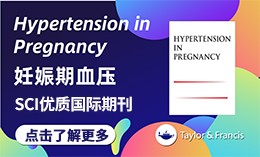当前期刊:
Environmental Chemistry Letters
 Go to
current issue
加入关注
本刊介绍/投稿指南
催更
Go to
current issue
加入关注
本刊介绍/投稿指南
催更
样式: 排序: IF: - GO 导出 标记为已读
样式: 排序: IF: - GO 导出 标记为已读
-
Effects of biochar on anaerobic digestion: a review Environ. Chem. Lett. (IF 15.0) Pub Date : 2024-07-20 Parmila Devi, Cigdem Eskicioglu
-
Advanced methods for treating gemfibrozil and carbamazepine in wastewater: a review Environ. Chem. Lett. (IF 15.0) Pub Date : 2024-07-05 Jothivel Sivanesan, Sankar Sudharsan Rameshwar, Baskaran Sivaprakash, Natarajan Rajamohan, Ahmed I. Osman, Ala’a H. Al-Muhtaseb
-
Rodenticide contamination of cormorants and mergansers feeding on wild fish Environ. Chem. Lett. (IF 15.0) Pub Date : 2024-07-03 Julia Regnery, Hannah Schmieg, Hannah Schrader, Olaf Zinke, Friederike Gethöffer, Sarah-Alica Dahl, Mario Schaffer, Julia Bachtin, Christel Möhlenkamp, Anton Friesen
-
Assessment of environmental and biological stress using mitochondria-targeted red-emitting and near-infrared fluorescent probes for biothiol analysis: a review Environ. Chem. Lett. (IF 15.0) Pub Date : 2024-07-04 Wen-Yu Lu, Hui-Jing Li, Yan-Chao Wu
-
Nanoplastics occurrence, detection methods, and impact on the nitrogen cycle: a review Environ. Chem. Lett. (IF 15.0) Pub Date : 2024-06-26 Yunpeng Xue, Kang Song, Zezheng Wang, Zhiwei Xia, Renhui Li, Qilin Wang, Lu Li
-
Nitrogen cycling and resource recovery from aquaculture wastewater treatment systems: a review Environ. Chem. Lett. (IF 15.0) Pub Date : 2024-06-19 Yongxia Huang, Lu Li, Renhui Li, Biqing Li, Qilin Wang, Kang Song
-
Enhanced levoglucosan production by graphene oxide-catalyzed pyrolysis of biomass Environ. Chem. Lett. (IF 15.0) Pub Date : 2024-06-17 Shuai Zhang, Jingjing Ma, Xiangjun Liu, Yayun Ma, Junqi Wang
-
Nanomaterials for surface-enhanced Raman spectroscopy-based metal detection: a review Environ. Chem. Lett. (IF 15.0) Pub Date : 2024-06-17 Dongchang Yang, Brian Youden, Andrew Carrier, Naizhen Yu, Ken Oakes, Mark Servos, Xu Zhang
-
Classical and advanced isotherms to model the adsorption of drugs, dyes and metals on activated carbonaceous materials: a review Environ. Chem. Lett. (IF 15.0) Pub Date : 2024-06-13 Issam Mechnou, Sarra Meskini, Esseddik Elqars, Az-Iddin Chham, Miloudi Hlaibi
-
Plant starch extraction, modification, and green applications: a review Environ. Chem. Lett. (IF 15.0) Pub Date : 2024-06-13 Ahmed K. Rashwan, Hala A. Younis, Asem M. Abdelshafy, Ahmed I. Osman, Mohamed R. Eletmany, Mahmoud A. Hafouda, Wei Chen
-
Hydrogen, ammonia and methanol for marine transportation Environ. Chem. Lett. (IF 15.0) Pub Date : 2024-06-13 Ahmed I. Osman, Mahmoud Nasr, Eric Lichtfouse, Mohamed Farghali, David W. Rooney
-
Simultaneous hydrogen production and photocatalytic pollutant removal: a review Environ. Chem. Lett. (IF 15.0) Pub Date : 2024-06-11 Amit Kumar, Pankaj Sharma, Gaurav Sharma, Pooja Dhiman, Genene Tessema Mola, Mohamed Farghali, Ahmed K. Rashwan, Mahmoud Nasr, Ahmed I. Osman, Tongtong Wang
-
Paracetamol environmental remediation and ecotoxicology: a review Environ. Chem. Lett. (IF 15.0) Pub Date : 2024-06-11 Yasmin Vieira, Julia Eduarda Spode, Guilherme Luiz Dotto, Jordana Georgin, Dison Stracke Pfingsten Franco, Glaydson Simões dos Reis, Eder Cláudio Lima
-
Phosphorus recycling by mineral-catalyzed ribonucleotide cleavage on iron and manganese oxides Environ. Chem. Lett. (IF 15.0) Pub Date : 2024-06-04 Annaleise R. Klein, Jade J. Basinski, Aurore Niyitanga Manzi, Cynthia X. Cheng, Marcos Sanchez, Wiriya Thongsomboon, Ludmilla Aristilde
-
Carbon dioxide sequestration with carbonic anhydrase nanobiocatalysts: a review Environ. Chem. Lett. (IF 15.0) Pub Date : 2024-06-05 Devendra Sillu, Varenyam Achal
-
Detection and remediation of pharmaceutical pollutants using metal oxide nanoparticle-functionalized carbon nanotubes: a review Environ. Chem. Lett. (IF 15.0) Pub Date : 2024-05-30 Sivakumar Akash, Sankar Sudharsan Rameshwar, Baskaran Sivaprakash, Natarajan Rajamohan, Dai-Viet N. Vo
-
Subcritical water conversion of biomass to biofuels, chemicals and materials: a review Environ. Chem. Lett. (IF 15.0) Pub Date : 2024-05-30 Kapil Khandelwal, Somaye Seraj, Sonil Nanda, Ramin Azargohar, Ajay K. Dalai
-
Occurrence, toxicity and removal of polystyrene microplastics and nanoplastics in human sperm Environ. Chem. Lett. (IF 15.0) Pub Date : 2024-05-30 Ying Chen, Cheng Cheng, Wenqing Xu, Yanfan Cui, Yan Tian, Yulin Jiang, Yangyang Yuan, Ruirui Qian, Yujie Wang, Liping Zheng, Houyang Chen, Tao Luo
-
The recycling of carbon-rich solid wastes from aluminum electrolytic cells: a review Environ. Chem. Lett. (IF 15.0) Pub Date : 2024-05-23 Lutong Ma, Zhesheng Qiu, Yusheng Tang, Wanzhang Yang, Bensong Chen, Jun Jiang, Yan Lin
-
Rapid conversion of carbon dioxide into titanium carbide by atmospheric microwave plasma Environ. Chem. Lett. (IF 15.0) Pub Date : 2024-05-21 Kittikhun Khotmungkhun, Peeratchai Kleebbua, Arkorn Chotiyasilp, Tanant Waritanant, Thassanant Atithep, Jedsada Junpha, Kittitat Subannajui
-
Artificial intelligence and machine learning for the optimization of pharmaceutical wastewater treatment systems: a review Environ. Chem. Lett. (IF 15.0) Pub Date : 2024-05-21 Voravich Ganthavee, Antoine Prandota Trzcinski
-
Enhanced hydrogen storage efficiency with sorbents and machine learning: a review Environ. Chem. Lett. (IF 15.0) Pub Date : 2024-05-16 Ahmed I. Osman, Walaa Abd-Elaziem, Mahmoud Nasr, Mohamed Farghali, Ahmed K. Rashwan, Atef Hamada, Y. Morris Wang, Moustafa A. Darwish, Tamer A. Sebaey, A. Khatab, Ammar H. Elsheikh
-
Polysaccharides for sustainable leather production: a review Environ. Chem. Lett. (IF 15.0) Pub Date : 2024-05-14 Shuang Liang, Xuechuan Wang, Siwei Sun, Dongyu Hao, Long Xie, Jin Yang, Xugang Dang
-
Acute and multigenerational toxicity of polylactic acid microplastics on a copepod bioindicator Environ. Chem. Lett. (IF 15.0) Pub Date : 2024-05-15 Wajid Ali, Shagnika Das, Jeremy Thery, Haksoo Jeong, Jae-Seong Lee, Philippe Zinck, Sami Souissi
-
Immunosensors in food, health, environment, and agriculture: a review Environ. Chem. Lett. (IF 15.0) Pub Date : 2024-05-09 Harsh Kumar, Rajni Dhalaria, Shivani Guleria, Richard Cimler, Prerna Prerna, Daljeet Singh Dhanjal, Chirag Chopra, Nidhi Sethi, Ashok Kumar Pathera, Deepak Kala, Neetika Kimta, Talwinder Kaur, Marian Valko, Sivakumar Manickam, Suliman Y. Alomar, Dinesh Kumar, Kamil Kuča
-
Nano-sized natural organic matter interacts with bisphenol A and decreases cytotoxicity to human cells Environ. Chem. Lett. (IF 15.0) Pub Date : 2024-05-09 Sicong Yao, Patrycja Boguta, Maria Virginia Giolito, Ludovico Pontoni, Maria Sirakov, Michelina Plateroti, Massimiliano Fabbricino
-
Firefighting aqueous film forming foam composition, properties and toxicity: a review Environ. Chem. Lett. (IF 15.0) Pub Date : 2024-05-03 Pragya Malik, Durgesh Nandini, Bijay P. Tripathi
-
Metal recovery from industrial solid waste by ultrasonic-assisted hydrometallurgical leaching: a review Environ. Chem. Lett. (IF 15.0) Pub Date : 2024-05-06 Jianfeng Ran, Yun Li, Xuxu Wang, Haisheng Duan, Ying Chen, Shaohua Yin, Shiwei Li, Libo Zhang, Jiaping Zhao
-
Conversion of food waste into energy and value-added products: a review Environ. Chem. Lett. (IF 15.0) Pub Date : 2024-05-06 Rekha Kumari, Asha Singh, Rozi Sharma, Piyush Malaviya
-
Calcium oxide waste-based catalysts for biodiesel production and depollution: a review Environ. Chem. Lett. (IF 15.0) Pub Date : 2024-05-02 Chook Kiong Teo, Poh Wai Chia, Nurhamizah Nordin, Su-Yin Kan, Noor Maizura Ismail, Zainal Zakaria, Rock Keey Liew, Lei Wu, Fu Siong Julius Yong
-
Atmospheric carbon dioxide capture by adsorption on amine-functionalized silica composites: a review Environ. Chem. Lett. (IF 15.0) Pub Date : 2024-04-28 Rahul Navik, Eryu Wang, Xiao Ding, KaiXuan Qiu, Jia Li
-
The chemical basis of seawater therapies: a review Environ. Chem. Lett. (IF 15.0) Pub Date : 2024-04-27 Michele Costanzo, Maria Anna Rachele De Giglio, Melinda Gilhen-Baker, Giovanni Nicola Roviello
-
Carbon–neutral hydrogen production by catalytic methane decomposition: a review Environ. Chem. Lett. (IF 15.0) Pub Date : 2024-04-20 Dwi Hantoko, Wasim Ullah Khan, Ahmed I. Osman, Mahmoud Nasr, Ahmed K. Rashwan, Yahya Gambo, Ahmed Al Shoaibi, Srinivasakannan Chandrasekar, Mohammad M. Hossain
-
Materials for sustainable metallic iron-based water filters: a review Environ. Chem. Lett. (IF 15.0) Pub Date : 2024-04-18 Minhui Xiao, Rui Hu, Willis Gwenzi, Ran Tao, Xuesong Cui, Huichen Yang, Chicgoua Noubactep
-
Methods to treat industrial salted waste: a review Environ. Chem. Lett. (IF 15.0) Pub Date : 2024-04-15 Xiuxiu Ruan, Min Song, Zhihao Fang, Hao Wang, Chaoyang Zhang, Weidong Chen
-
Biomass pretreatment, bioprocessing and reactor design for biohydrogen production: a review Environ. Chem. Lett. (IF 15.0) Pub Date : 2024-04-10 Sahil Sahil, Rickwinder Singh, Shyam K. Masakapalli, Nidhi Pareek, Andrey A. Kovalev, Yuriy V. Litti, Sonil Nanda, Vivekanand Vivekanand
-
Food chain microplastics contamination and impact on human health: a review Environ. Chem. Lett. (IF 15.0) Pub Date : 2024-04-09 Chukwuebuka Gabriel Eze, Chidiebele Emmanuel Nwankwo, Satarupa Dey, Suresh Sundaramurthy, Emmanuel Sunday Okeke
-
Characterization and environmental applications of soil biofilms: a review Environ. Chem. Lett. (IF 15.0) Pub Date : 2024-04-08 Guoliang Wang, Tian Li, Qixing Zhou, Xiaoling Zhang, Ruixiang Li, Jinning Wang
-
Textile production by additive manufacturing and textile waste recycling: a review Environ. Chem. Lett. (IF 15.0) Pub Date : 2024-04-05 Weiqiang Fan, Yongzhen Wang, Rulin Liu, Jing Zou, Xiang Yu, Yaming Liu, Chao Zhi, Jiaguang Meng
-
High caffeine levels in old sewer system waters reveal domestic wastewater leakage Environ. Chem. Lett. (IF 15.0) Pub Date : 2024-04-05 Noriatsu Ozaki, Tomonori Kindaichi, Akiyoshi Ohashi
-
Analysis of aged microplastics: a review Environ. Chem. Lett. (IF 15.0) Pub Date : 2024-04-04 Yanqi Shi, Linping Shi, Hexinyue Huang, Kefu Ye, Luming Yang, Zeena Wang, Yifan Sun, Dunzhu Li, Yunhong Shi, Liwen Xiao, Shixiang Gao
-
Production methods and applications of bioactive polylactic acid: a review Environ. Chem. Lett. (IF 15.0) Pub Date : 2024-04-02 Patrícia S. Ferreira, Sónia M. Ribeiro, Rita Pontes, João Nunes
-
Transport of layered and spherical microplastics in aqueous ecosystems: a review Environ. Chem. Lett. (IF 15.0) Pub Date : 2024-03-26 Kheerthana Ramesh, Padmanaban Velayudhaperumal Chellam, Baranidharan Sundaram
-
Health risk of human exposure to microplastics: a review Environ. Chem. Lett. (IF 15.0) Pub Date : 2024-03-25 Kuok Ho Daniel Tang, Ronghua Li, Zhi Li, Dun Wang
-
Impact of petroleum hydrocarbon and heavy metal pollution on coral reefs and mangroves: a review Environ. Chem. Lett. (IF 15.0) Pub Date : 2024-03-22 Punniyakotti Elumalai, Punniyakotti Parthipan, Xueke Gao, Jinjie Cui, Arunagiri Santhosh Kumar, Perumal Dhandapani, Aruliah Rajasekar, Hemen Sarma, Nadana Raja Vadivu Ganapathy, Jayaraman Theerthagiri, Ahreum Min, Myong Yong Choi
-
Metal oxide nanobiochar materials to remediate heavy metal and dye pollution: a review Environ. Chem. Lett. (IF 15.0) Pub Date : 2024-03-21 Sivakumar Akash, Sankar Sudharsan Rameshwar, Natarajan Rajamohan, Manivasagan Rajasimman, Dai-Viet N. Vo
-
Alkaline extraction yields a higher number of microplastics in forest canopy leaves: implication for microplastic storage Environ. Chem. Lett. (IF 15.0) Pub Date : 2024-03-20 Natsu Sunaga, Hiroshi Okochi, Yasuhiro Niida, Akane Miyazaki
-
Retention of per- and polyfluoroalkyl substances by syringe filters Environ. Chem. Lett. (IF 15.0) Pub Date : 2024-03-19 Ke He, Anna Feerick, Hongyue Jin, Jahir A. Batista Andrade, Marylia Duarte Batista, Caitlyn Dugan, Lee Blaney
-
Room-temperature and carbon-negative production of biodiesel via synergy of geminal-atom and photothermal catalysis Environ. Chem. Lett. (IF 15.0) Pub Date : 2024-03-19 Jinshu Huang, Tengyu Liu, Keping Wang, Zhuochun Huang, Junqi Wang, Samuel Lalthazuala Rokhum, Hu Li
-
Application of activated carbon in renewable energy conversion and storage systems: a review Environ. Chem. Lett. (IF 15.0) Pub Date : 2024-03-19 Zahra Teimouri, Sonil Nanda, Nicolas Abatzoglou, Ajay K. Dalai
-
The overlooked toxicity of non-carcinogenic polycyclic aromatic hydrocarbons Environ. Chem. Lett. (IF 15.0) Pub Date : 2024-03-16 Théo Mille, Paul Henri Graindorge, Chloé Morel, Justine Paoli, Eric Lichtfouse, Henri Schroeder, Nathalie Grova
-
Biofilm formation, occurrence, microbial communication, impact and characterization methods in natural and anthropic systems: a review Environ. Chem. Lett. (IF 15.0) Pub Date : 2024-03-13 Punniyakotti Elumalai, Xuke Gao, Jinjie Cui, Arunagiri Santhosh Kumar, Perumal Dhandapani, Punniyakotti Parthipan, Obulisamy Parthiba Karthikeyan, Jayaraman Theerthagiri, Soorathep Kheawhom, Myong Yong Choi
-
Toxic effects of heavy metals on crustaceans and associated health risks in humans: a review Environ. Chem. Lett. (IF 15.0) Pub Date : 2024-03-08 Waqas Waqas, Ye Yuan, Sardar Ali, Mengqian Zhang, Muhammad Shafiq, Wajid Ali, Yongyi Chen, Zifei Xiang, Ruixiang Chen, Mhd Ikhwanuddin, Hongyu Ma
-
Natural and engineered enzymes for polyester degradation: a review Environ. Chem. Lett. (IF 15.0) Pub Date : 2024-03-07 Rey-Ting Guo, Xian Li, Yu Yang, Jian-Wen Huang, Panpan Shen, Rock Keey Liew, Chun-Chi Chen
-
Placental transfer and hazards of silver nanoparticles exposure during pregnancy: a review Environ. Chem. Lett. (IF 15.0) Pub Date : 2024-03-07 Yapeng Han, Chengxi Li, Yán Wāng
-
Textile dyeing using natural mordants and dyes: a review Environ. Chem. Lett. (IF 15.0) Pub Date : 2024-03-06 Md. Reazuddin Repon, Barshan Dev, Md Ashikur Rahman, Sigita Jurkonienė, Aminoddin Haji, Md. Abdul Alim, Eglė Kumpikaitė
-
Synthesis and environmental applications of biochar-supported nano-zero-valent iron composites: a review Environ. Chem. Lett. (IF 15.0) Pub Date : 2024-03-05 Xinlian Zhong, Yujian Lai, Xuemei Wang, Menglu Wang, Wei Han, Meng Zhang, Hongbing Ji
-
Conversion of lignocellulosic biomass-derived compounds to 2-ethylhexanol: a review Environ. Chem. Lett. (IF 15.0) Pub Date : 2024-03-04 Chongran Sun, Shuangfei Zhang, Binyuan Gao, Tao Yang, Yuguang Wang, Haina Cheng, Hongbo Zhou, Zhu Chen
-
Hydrogel membrane composite reduces fouling and retains ammonium efficiently Environ. Chem. Lett. (IF 15.0) Pub Date : 2024-03-01 Ralph Rolly Gonzales, Jing Li, Pengfei Zhang, Ping Xu, Zhan Li, Mengyang Hu, Zhaohuan Mai, Kecheng Guan, Hideto Matsuyama
-
Biodegradable microplastics interaction with pollutants and their potential toxicity for aquatic biota: a review Environ. Chem. Lett. (IF 15.0) Pub Date : 2024-02-27 Wajid Ali, Haksoo Jeong, Jae-Seong Lee, Philippe Zinck, Sami Souissi












































 京公网安备 11010802027423号
京公网安备 11010802027423号